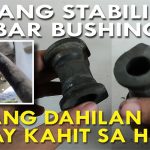23,126
189
YouTubeR error: Video ID:YwZ-lcdOeaag not found
The wheel hub bearing allows the wheel to spin freely while supporting the vehicle’s weight. It also plays a crucial role in maintaining the proper alignment and operation of the wheel and its components. It is housed within the wheel hub, which is the assembly that attaches the wheel to the vehicle’s axle. Typically, it consists of steel balls or rollers enclosed in a metal ring, known as a race. These components reduce friction and wear by allowing smooth rotation of the wheel.
Over time, wheel hub bearings can fail due to various factors. Here are the main reasons why a wheel hub bearing may fail and the signs of failure:
- Wear and Tear:
- Bearings endure significant stress and load from the vehicle’s weight and road conditions. Over time, this constant load can cause the bearings to wear out.
- Lack of Lubrication:
- Bearings require proper lubrication to function smoothly. Inadequate lubrication can lead to increased friction and heat, causing the bearings to degrade more quickly.
- Contamination:
- Dirt, water, and other contaminants can infiltrate the bearing assembly, leading to corrosion and wear. Seals designed to keep contaminants out can fail, allowing debris to enter.
- Impact Damage:
- Hitting potholes, curbs, or other obstacles can damage the bearing. Such impacts can cause the bearing races to deform or create pits on the bearing surfaces.
- Improper Installation:
- Incorrect installation can lead to premature bearing failure. Over-tightening or under-tightening the axle nut, for example, can cause excessive stress on the bearing.
- Manufacturing Defects:
- Although rare, defects in the manufacturing process can result in poor-quality bearings that fail sooner than expected.
SYMPTOMS:
- Unusual noises like grinding or humming from the wheel area.
- Vibration or wobbling of the wheel.
- Uneven tire wear.
- Increased steering play or difficulty.
TOOLS AND MATERIALS:
- Jack and jack stands
- Lug wrench
- Socket set
- Screwdrivers
- Hammer
- Pliers
- Bearing press or a bearing puller (if needed)
- New wheel hub bearing
PROCEDURES:
- Preparation:
- Park the vehicle on a flat surface and engage the parking brake.
- Loosen the lug nuts on the wheel with a lug wrench.
- Lifting the Vehicle:
- Use a jack to lift the vehicle and place it securely on jack stands.
- Remove the wheel.
- Remove the Brake Caliper and Rotor:
- Unbolt the brake caliper using a socket set and hang it securely using a piece of wire to avoid putting stress on the brake line.
- Remove the brake rotor. If it’s stuck, use a hammer to gently tap it loose.
- Access the Wheel Hub:
- Depending on your vehicle, you might need to remove additional components.
- Remove the Wheel Hub Bearing:
- Unbolt the wheel hub assembly from the steering knuckle. This usually involves removing several bolts.
- Use a bearing puller or a hammer to gently tap the old bearing out of the hub assembly. Be careful not to damage surrounding components.
- Install the New Wheel Hub Bearing:
- Clean the hub and surrounding area.
- Press the new bearing into the hub assembly. A bearing press is ideal for this, but a hammer and block of wood can also work if used carefully.
- Ensure the bearing is fully seated and properly aligned.
- Reassemble Components:
- Reattach the wheel hub assembly to the steering knuckle.
- Reattach the brake rotor and caliper.
- Put the wheel back on and hand-tighten the lug nuts.
- Lower the Vehicle:
- Remove the jack stands and lower the vehicle to the ground.
- Tighten the lug nuts in a star pattern to ensure even pressure.
- Final Checks:
- Double-check all bolts and nuts to ensure they are properly tightened.
- Test drive the vehicle to ensure the repair was successful and the bearing is functioning correctly.
Tips:
If at any point you feel unsure or encounter difficulties, it’s advisable to consult a professional mechanic. Proper installation of a wheel hub bearing is crucial for safe vehicle operation.

